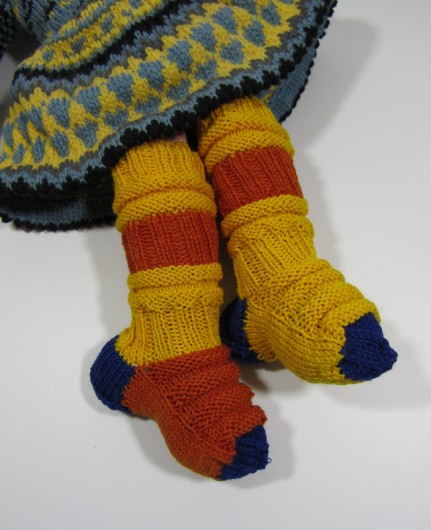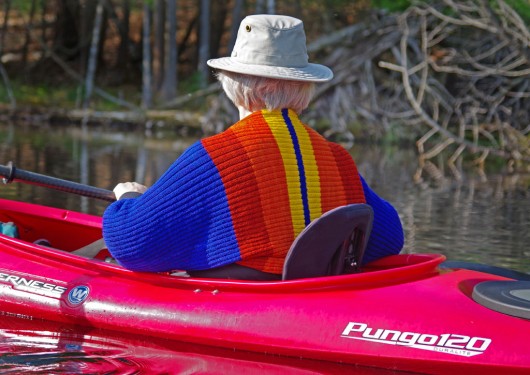This is Polka Dot Sheep designer Aimee Anderson’s newest hat pattern: Maeve’s Hat. I was part of Alexander’s test knit on Ravelry. The pattern hasn’t yet been added to her website, but it’s available for download on Ravelry.
When you check out the pattern you’ll notice I modified it some. Everywhere there’s one of those beefy bobbles, Anderson’s pattern has a bead. In the test-knit phase, bobbles were an alternative in the pattern. The beaded version is elegant. My version is, well, not elegant. Mine is funky and fun.
This is a fingering weight pattern. I didn’t want puny bobbles, so I knit one, purled one, three times into the stitch, to create six from one. Then I turned and knit back on those six stitches, turned and purled those six stitches, then passed each of the 5 stitches, in turn, over the one nearest the right needle tip. In the body of the hat, I placed a bobble at each spot where the pattern called for a bead. In that first set of bobbles near that sweet picot edge, I spaced the bobbles four stitches apart.
Here’s another view, with a bit of the pentagon-shaped crown showing.
Ah, what’s that yarn? It’s Wollmeise Sockenwolle 80/20 Twin (80% merino, 20% nylon) left over from my kayak shrug I knit a few years back. I was saving it for a special project and decided the time had come.
This next hat is Evelyn’s. The pattern, though, is Margot’s Hat. And again it’s a Polka Dot Sheep pattern by Alexander.
The pattern calls for DK weight, but the DK I had on hand didn’t want to get to gauge. So I knit it instead in Malabrigo Rios, a worsted weight.
Alexander’s patterns are very attentive to small details. In this hat, it’s the way the picot edge is created and how the earflaps are tucked in place. My only modification was to use I-cord ties instead of twisty cord ties.
Of course, little ones look very sweet in pastels. But, I enjoy seeing them in earth tones.
Alexander’s two daughters are Maeve and Margot. Now they each have a hat pattern named after them. Both my creations will end up in Evelyn’s collection.













